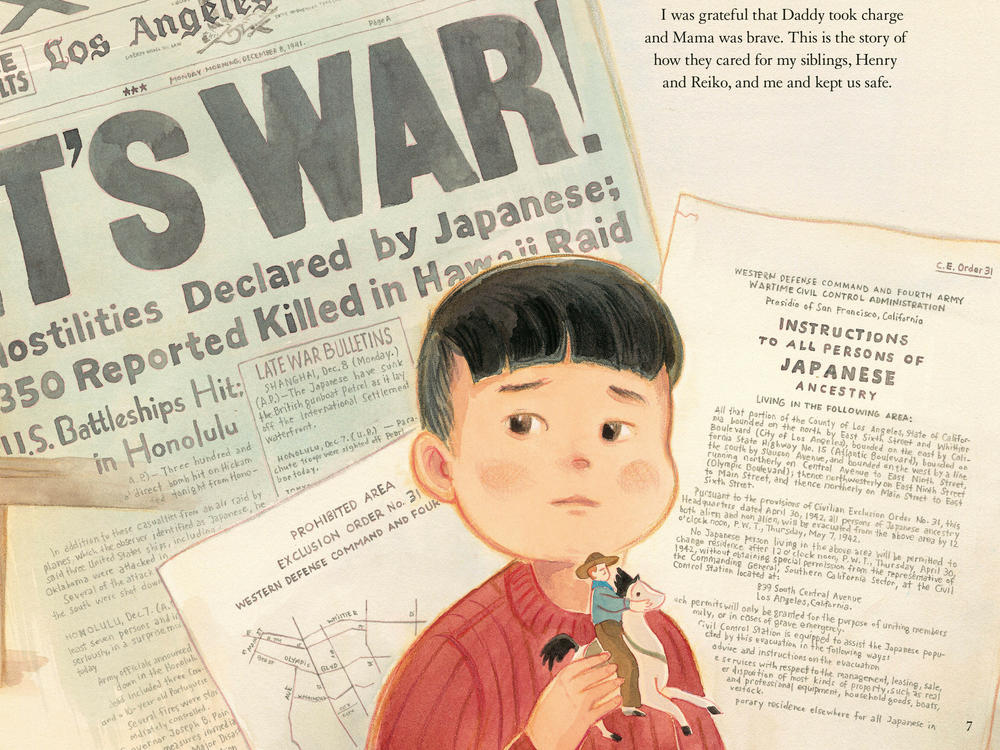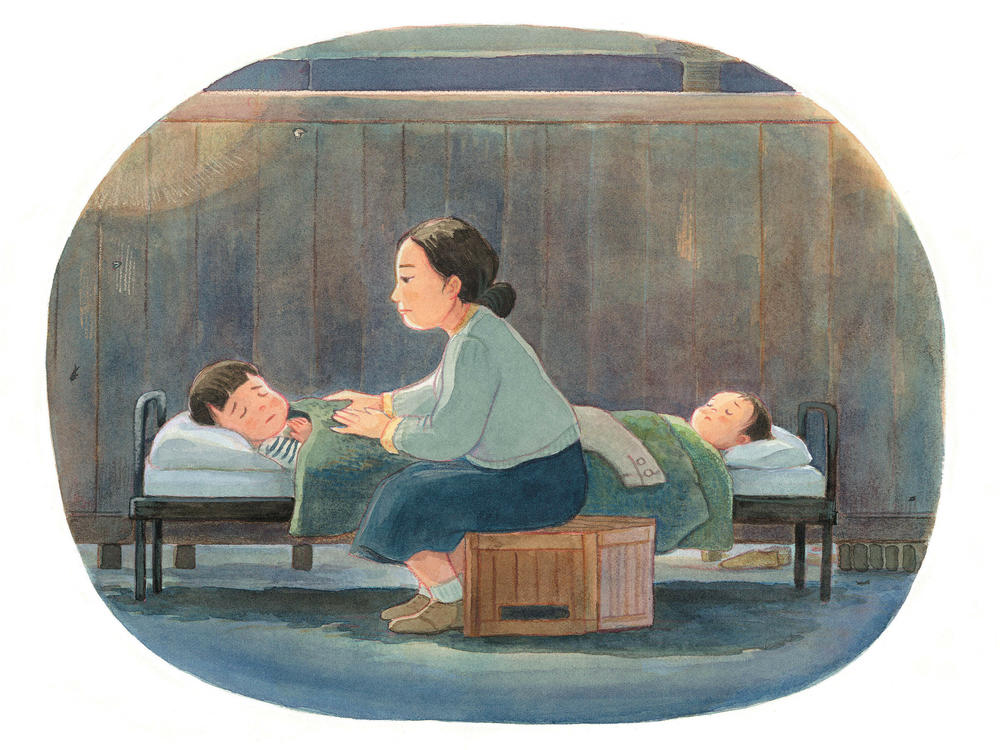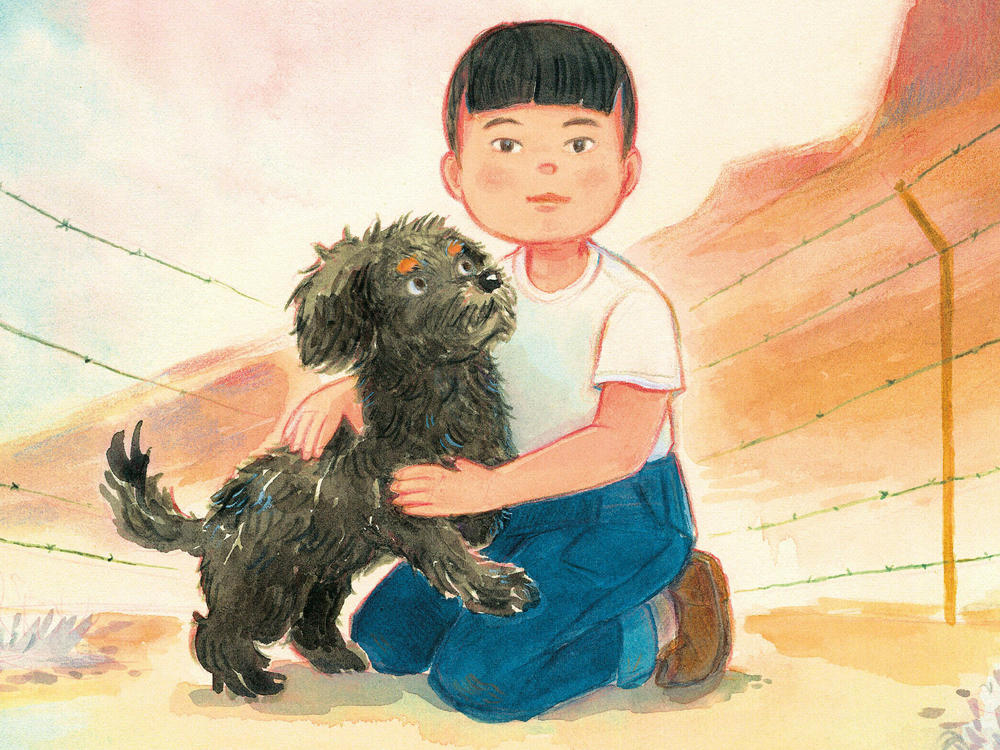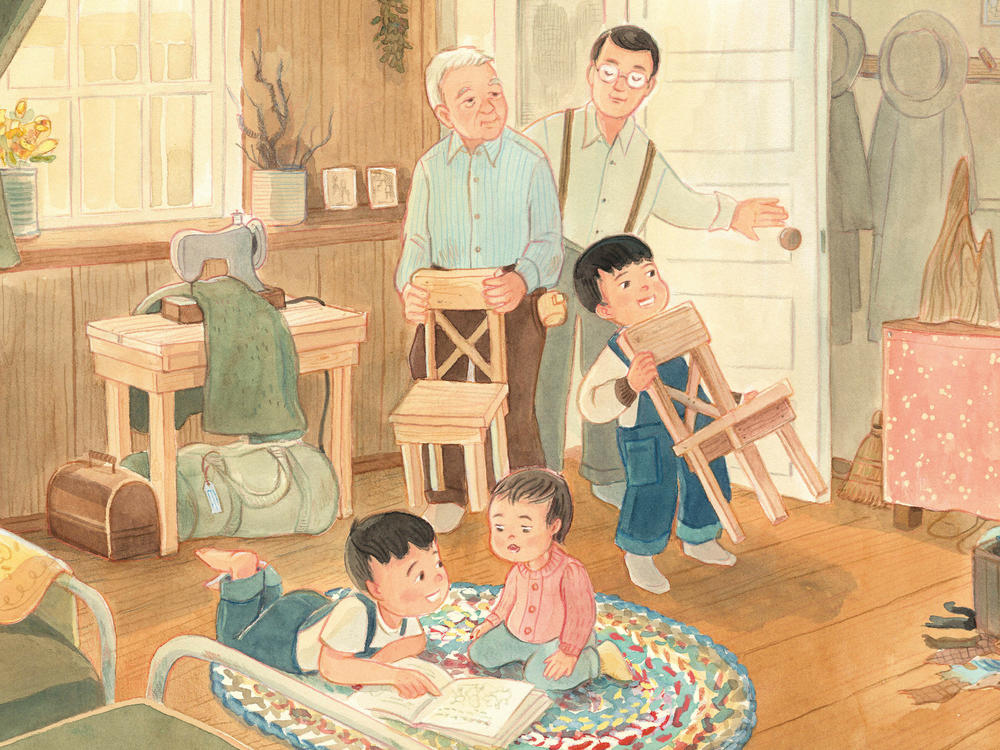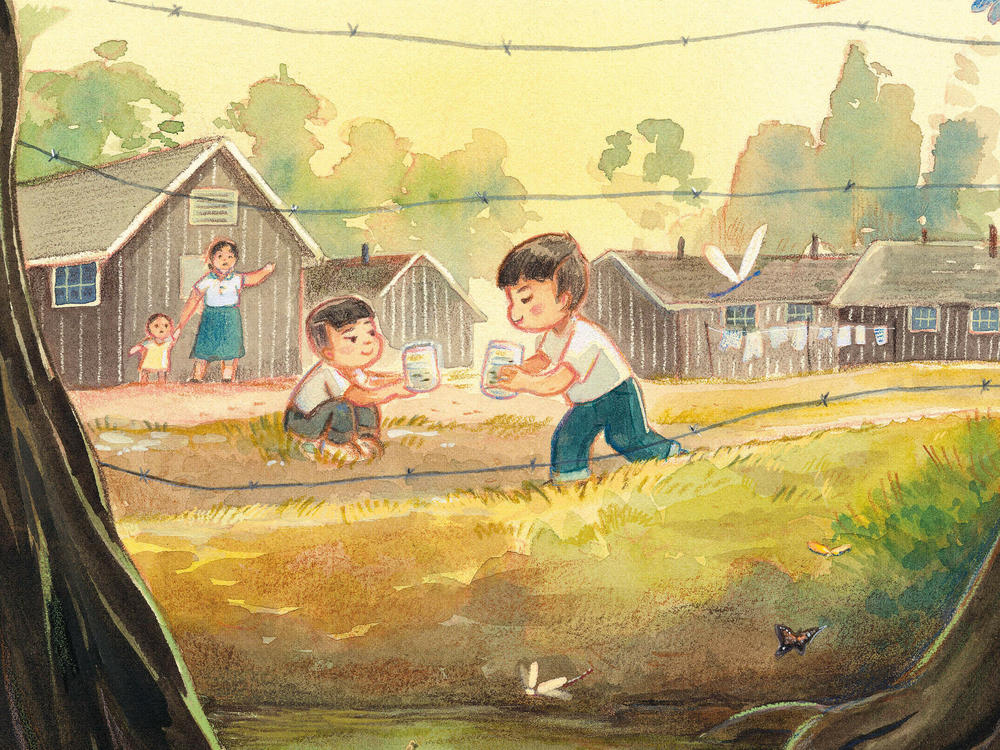Section Branding
Header Content
George Takei 'Lost Freedom' some 80 years ago – now he's written that story for kids
Primary Content
George Takei was just 4 years old when when President Franklin D. Roosevelt signed Executive Order 9066:
"I hereby authorize and direct the Secretary of War, and the Military Commanders... to prescribe military areas in such places and of such extent as he or the appropriate Military Commander may determine, from which any or all persons may be excluded..."
It was Feb. 19, 1942. Japan had attacked Pearl Harbor two months earlier; For looking like the enemy, Japanese and Japanese American people in the U.S. were now considered "enemy combatants" and the executive order authorized the government to forcibly remove approximately 125,000 people from their homes and relocate them to prison camps around the country.
Star Trek actor George Takei has written about this time in his life before — once in an autobiography, then in a graphic memoir, and now in his new children's book, My Lost Freedom.
It's about the years he and his mom, dad, brother and baby sister spent in a string of prison camps: swampy Camp Rohwer in Arkansas, desolate Tule Lake in northern California. But first, they were taken from their home, driven to the Santa Anita racetrack and forced to live in horse stalls while the camps were being built.
"The horse stalls were pungent," Takei remembers, "overwhelming with the stench of horse manure. The air was full of flies, buzzing. My mother, I remember, kept mumbling 'So humiliating. So humiliating.'"
He says, "Michelle's drawing really captured the degradation our family was reduced to."
Michelle is Michelle Lee, the illustrator — and researcher — for the book. Lee relied heavily on Takei's text and his excellent memory, but it was the research that both agree really brought the art to life.
"I'm telling it from the perspective of a senior citizen," Takei, 87, laughs. "I really had to wring my brains to try to remember some of the details."
So Takei took Lee to the Japanese American National Museum in Los Angeles, where he is a member of the board. They had lunch in Little Tokyo, got to know each other, met with the educational director, and looked at the exhibits. Then Lee started digging into the archives.
"I looked for primary sources that showed what life was like because I feel like that humanizes it a lot more," Lee explains. She found some color photographs taken by Bill Manbo, who had smuggled his camera into the internment camp at Heart Mountain in Wyoming. "While I was painting the book, I tried as much to depict George and his family just going about their lives under these really difficult circumstances."
Takei says he was impressed with how Lee managed to capture his parents: his father, the reluctant leader and his mother, a fashion icon in her hats and furs. "This has been the first time that I've had to depict real people," Lee adds.
To get a feel for 1940s fashion, Lee says she looked at old Sears catalogues. "What are people wearing? All the men are wearing suits. What kind of colors were clothes back then."
But a lot of information has also been lost — Lee wasn't able to see, for example, where Takei and his family lived in Arkansas because the barracks at Camp Rohwer have been torn down — there's a museum there now. "I didn't actually come across too many photos of the interior of the barracks," says Lee. "The ones I did come across were very staged."
She did, however, find the original floor plans for the barracks at Jerome Camp, also in Arkansas. "I actually printed the floorplan out and then built up a little model just to see what the space was actually like," Lee says. "I think it just emphasized how small of a space this is that whole families were crammed into."
One illustration in the book shows the work that Takei's mother put in to make that barrack — no more than tar paper and boards stuck together — a home.
"She gathered rags and tore them up into strips and braided them into rugs so that we would be stepping on something warm," Takei remembers. She found army surplus fabrics and sewed curtains for the windows. She took plant branches that had fallen off the nearby trees and made decorative sculptures. She asked a friendly neighbor to build a table and chairs.
"You drew the home that my mother made out of that raw space, Takei tells Lee. "That was wonderful."
Michelle Lee painted the art for My Lost Freedom using watercolor, gouache and colored pencils. Most of the illustrations have a very warm palette, but ever-present are the barbed wire fences and the guard towers. "There's a lot of fencing and bars," Lee explains. "That was kind of the motif that I was using throughout the book... A lot of vertical and horizontal patterns to kind of emphasize just how overbearing it was."
Takei says one of his favorite drawings in the book is a scene of him and his brother, Henry, playing by a culvert.
"Camp Rohwer was a strange and magical place," Takei writes. "We'd never seen trees rising out of murky waters or such colorful butterflies. Our block was surrounded by a drainage ditch, home to tiny, wiggly black fishies. I scooped them up into a jar.
One morning they had funny bumps. Then they lost their tails and their legs popped out. They turned into frogs!"
"They're just two children among many children who were imprisoned at these camps," says Lee, "and to them, perhaps, aspects of being there were just fun." The illustration depicts both childlike wonder and — still, always — a sense of foreboding. Butterflies fly around a barbed wire fence. A bright sun shines on large, dark swamp trees. Kids play in the shadow of a guard tower.
"There's so much that you tell in that one picture," says Takei. "That's the art."
"So many of your memories are of how perceptive you are to things that are going on around you," adds Lee, "but also still approaching things from a child's perspective."
Even though the events in My Lost Freedom took place more than 80 years ago, illustrator Michelle Lee and author George Takei say the story is still very relevant today.
"These themes of displacement and uprooting of communities from one place to another — these are things that are constantly happening," says Lee. Because of war and because of political decisions ... those themes aren't uncommon. They're universal."
Takei agrees. "People need to know the lessons and learn that lesson and apply it to hard times today. And we hope that a lot of people get the book and read it to their children or read it to other children and act on it."
He's done his job, he says, now the readers have their job.
